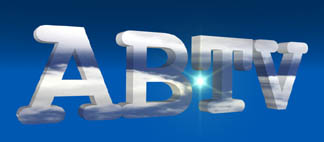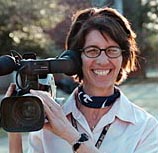Despite the availability of journalists trained in shooting, reporting, recording, writing, and editing, the trend in Broadcast News and news magazine seems to head the other way. The network camera crews I work with are hired to concentrate on their specialty. This can maximize our success rate on complicated technical shoots. In single camera field pieces, it can lead to frustration and mediocrity. The first full week of January brought several ABC crews to New Mexico to cover the launch of the Global Hilton, a balloon designed to fly two men around the world. Nightline has a major commitment to cover this competition, and ABC World News, Good Morning America, World News Now, and NewsOne, the ABC news syndication service, wanted reports. On the ground for ABC were four crews, four field producers, one correspondent, and a Satellite truck operator. We also had a chase crew in a Lear jet, and a chase crew provided by our affiliate in the KOAT Sky 7 helicopter. We had a camera inside the balloon capsule, with a microwave link that we routed to the SAT truck. At the launch field, one crew was dedicated to providing live pictures of the launch (these pictures and sound were recorded in the SAT truck, and in New York as well). Another team staked out a perspective shot from a nearby roof top. The third crew was there to shoot correspondent stand-ups, and stake out a different angle of the launch (media access was restricted, but tolerable). The last crew was free to float, shooting great moments in the launch preparation without having to be distracted by other duties. Following the launch, we were able to break one crew, to sleep, and two others to eat. One crew was sent to "Mission Control" to cover the flight from there. That crew was able to shoot the team on the ground as they were stricken with the news that something was wrong on the balloon. The next crew was dispatched to chase the balloon, on the ground. The remaining crew worked with the correspondent, and also set up a "Live To Tape" for an anticipated Ted Koppel interview from Washington. The use of specialists works very well for us. The uplinker uplinks, the field producers gather elements for the story, and one field producer writes and edits with the correspondent. This is not to say that crews are discouraged from expressing editorial input. Only that their jobs are very technical and very specific. I think this is apparent in the quality of shooting, lighting, and audio at the network level. It also improves the success rate on live shots. The crews who shoot single camera field pieces complain to me about shoots where they are merely there to set up the camera and light the shots. Many field producers, especially on the syndicated shows, arrive at a story with a shot list, and fail to share any information about the shoot with the crew. The crew is then restricted to plodding through the day, shot by shot, trying to guess what the piece is about, and what the field producer is trying to convey to the viewer. This disturbing trend discourages the shooting
team from sharing their experience and talent. I hope the pendulum
will swing back, allowing the crews to use their expertise to make good
television.
 Amy Bowers
|
